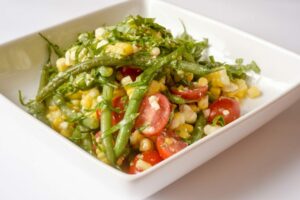Beat the Heat: Gardening in the Morning and Evening
***This article was written by Angela Mason Foster, Beaufort County Master Gardener*** In Eastern North Carolina’s Zone 8a, summer often …



El inglés es el idioma de control de esta página. En la medida en que haya algún conflicto entre la traducción al inglés y la traducción, el inglés prevalece.
Al hacer clic en el enlace de traducción se activa un servicio de traducción gratuito para convertir la página al español. Al igual que con cualquier traducción por Internet, la conversión no es sensible al contexto y puede que no traduzca el texto en su significado original. NC State Extension no garantiza la exactitud del texto traducido. Por favor, tenga en cuenta que algunas aplicaciones y/o servicios pueden no funcionar como se espera cuando se traducen.
Inglês é o idioma de controle desta página. Na medida que haja algum conflito entre o texto original em Inglês e a tradução, o Inglês prevalece.
Ao clicar no link de tradução, um serviço gratuito de tradução será ativado para converter a página para o Português. Como em qualquer tradução pela internet, a conversão não é sensivel ao contexto e pode não ocorrer a tradução para o significado orginal. O serviço de Extensão da Carolina do Norte (NC State Extension) não garante a exatidão do texto traduzido. Por favor, observe que algumas funções ou serviços podem não funcionar como esperado após a tradução.
English is the controlling language of this page. To the extent there is any conflict between the English text and the translation, English controls.
Clicking on the translation link activates a free translation service to convert the page to Spanish. As with any Internet translation, the conversion is not context-sensitive and may not translate the text to its original meaning. NC State Extension does not guarantee the accuracy of the translated text. Please note that some applications and/or services may not function as expected when translated.
Collapse ▲***This article was written by Angela Mason Foster, Beaufort County Master Gardener*** In Eastern North Carolina’s Zone 8a, summer often …

We all know we should be eating more fruits and vegetables. But, admit it…..that’s hard to do. Salads are …
***This article was written by Angela Mason Foster, Beaufort County Master Gardener*** It’s mid-summer in Eastern North Carolina, and your …
**This article was written by Angela Mason Foster, Beaufort County Master Gardener Volunteer** It’s a familiar summer sight in Eastern …
**This article was written by Angela Mason Foster, Beaufort County Master Gardener Volunteer** It happened just the other day. I …
**This article written by Angela Mason Foster, Beaufort County Master Gardener Volunteer** As spring gives way to summer, gardeners find …
**Article written by Angela Mason, Beaufort County Cooperative Extension Master Gardener Volunteer** As gardeners, we often get swept up in …
**Article written by Angela Mason, Beaufort County Cooperative Extension Master Gardener Volunteer** As the temperatures climb and the days grow …

The nation’s first Father’s Day was celebrated on June 19, 1910, in the state of Washington. Sonora Smart Dodd, …
** Article written by Angela Mason, Extension Master Gardener℠ Volunteer, Beaufort County Center** As gardeners, we often focus on beautiful …
**Article written by Angela Mason, Extension Master Gardener℠ Volunteer of Beaufort County** There’s something deeply satisfying about walking into a …
**This article written by Angela Mason, Beaufort County Extension Master Gardener Volunteer** Few plants capture the imagination quite like orchids. …

My body is craving a bite of sunshine with fresh salads and more vegetables! If you’re feeling the same …
(This article was written by Angela Mason Foster, Extension Master Gardener℠ Volunteer) If you’ve spent more than five minutes on …
(This article was written by Angela Mason Foster, Extension Master Gardener℠ Volunteer) There’s something irresistibly nostalgic about African violets. Maybe …

Mother’s Day is just around the corner, and what better way to celebrate than by preparing a special meal …
(This article was written by Angela Mason Foster, Extension Master Gardener℠ Volunteer) When most people think of houseplants, their minds …

Black eyed peas, pinto beans, edamame, these are all legumes that are good sources of protein and can be …
(This article was written by Angela Mason Foster, Extension Master Gardener℠ Volunteer) Gardeners know that healthy soil is the foundation …

Celebrate Easter with a brunch this year. If you ever wanted an excuse to eat all of the yummy …